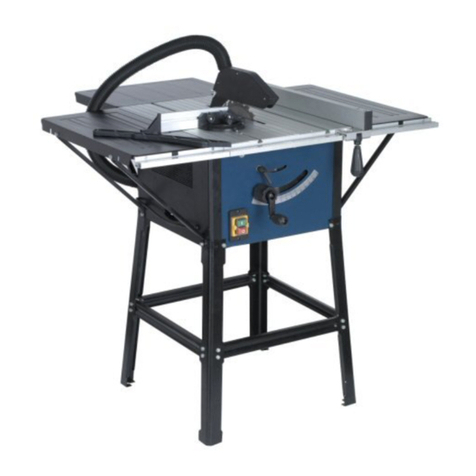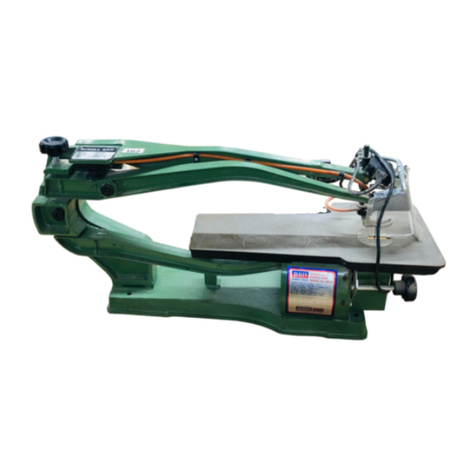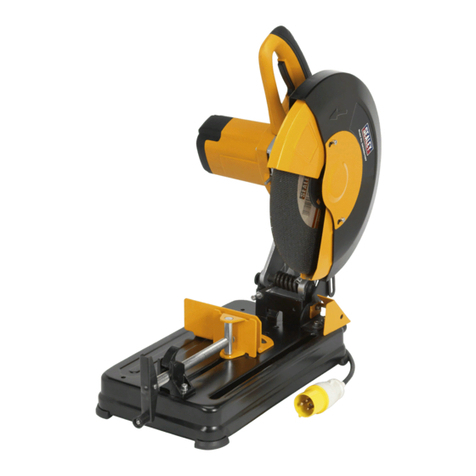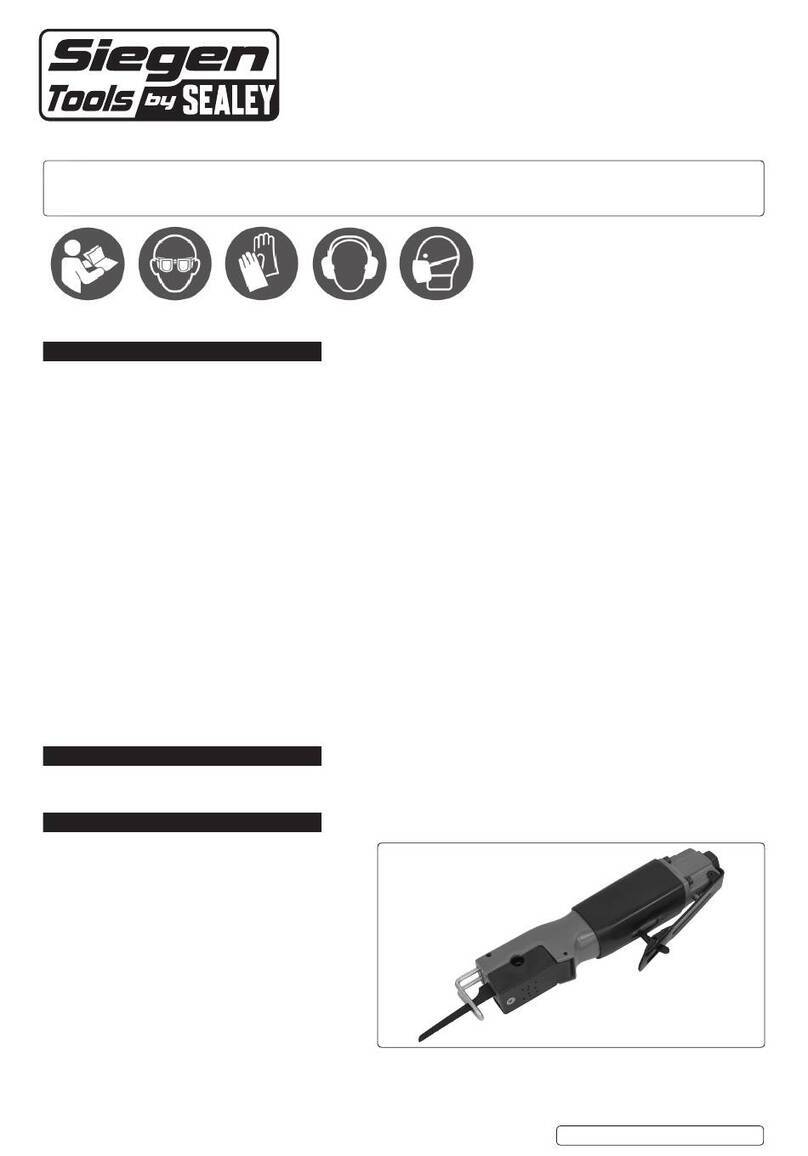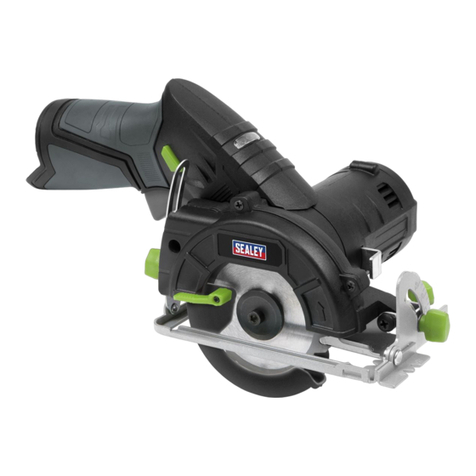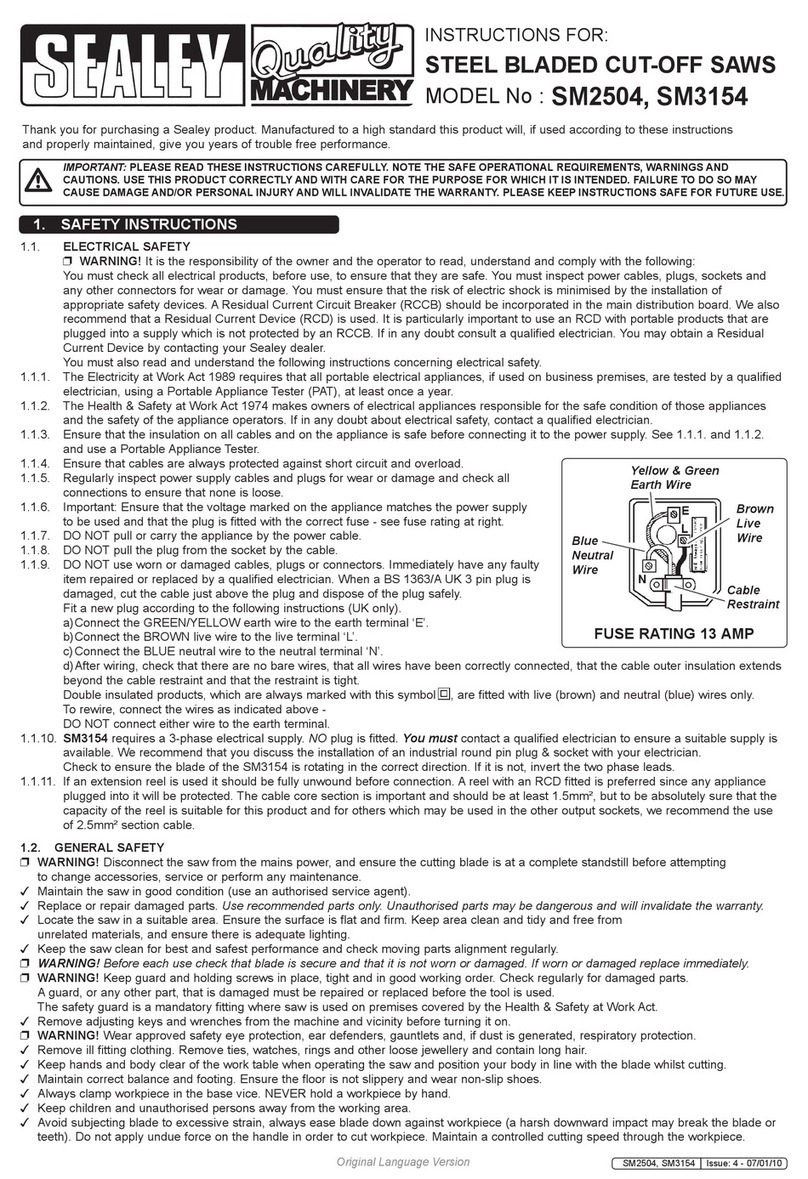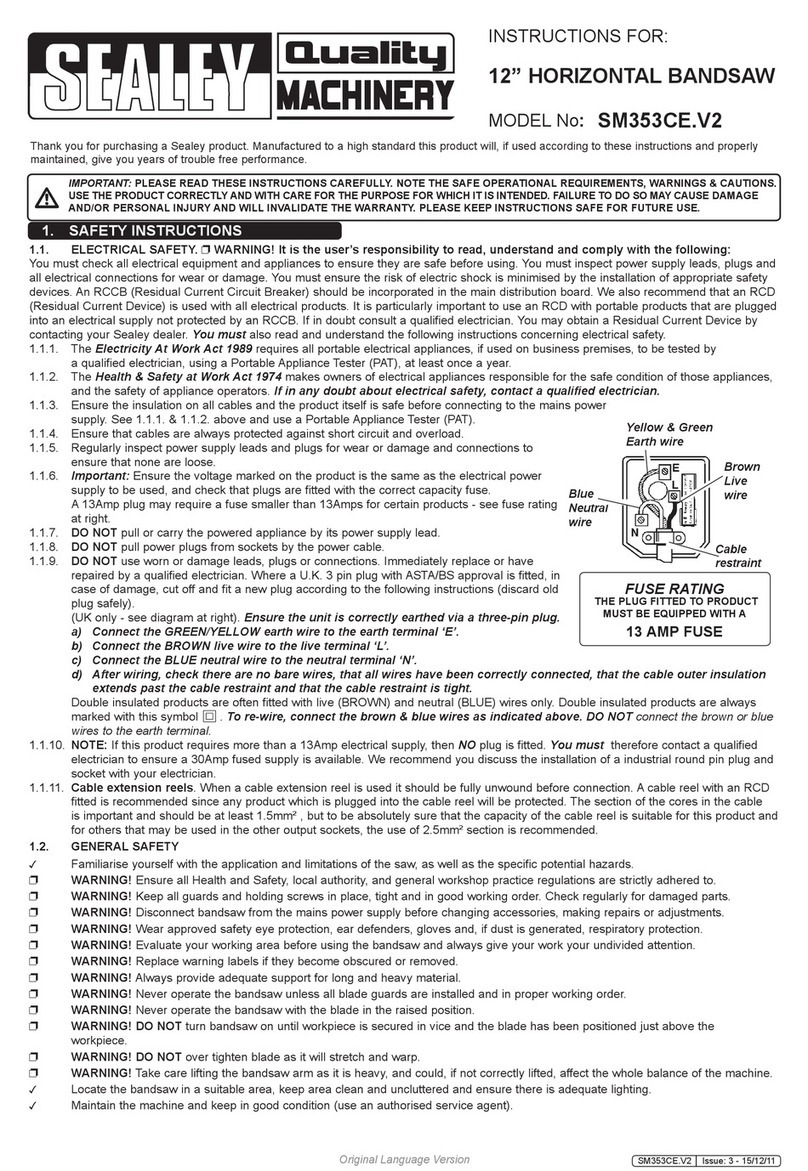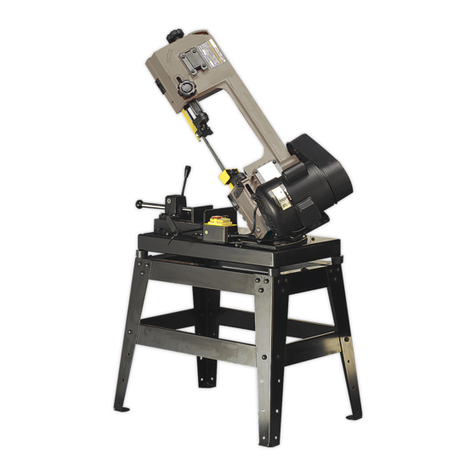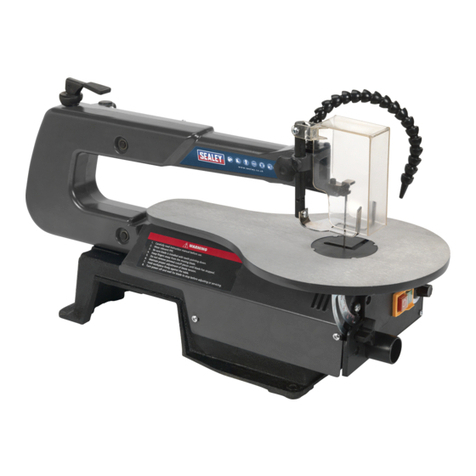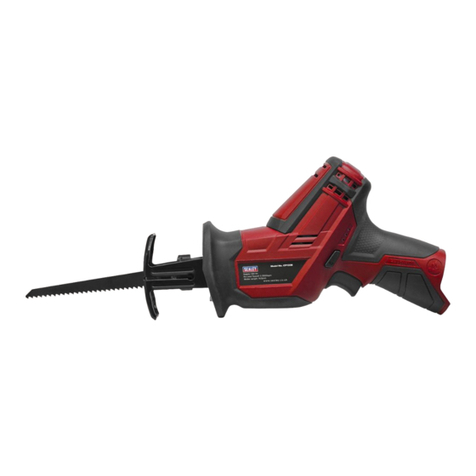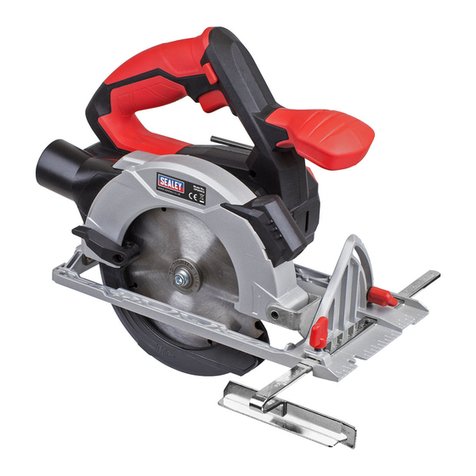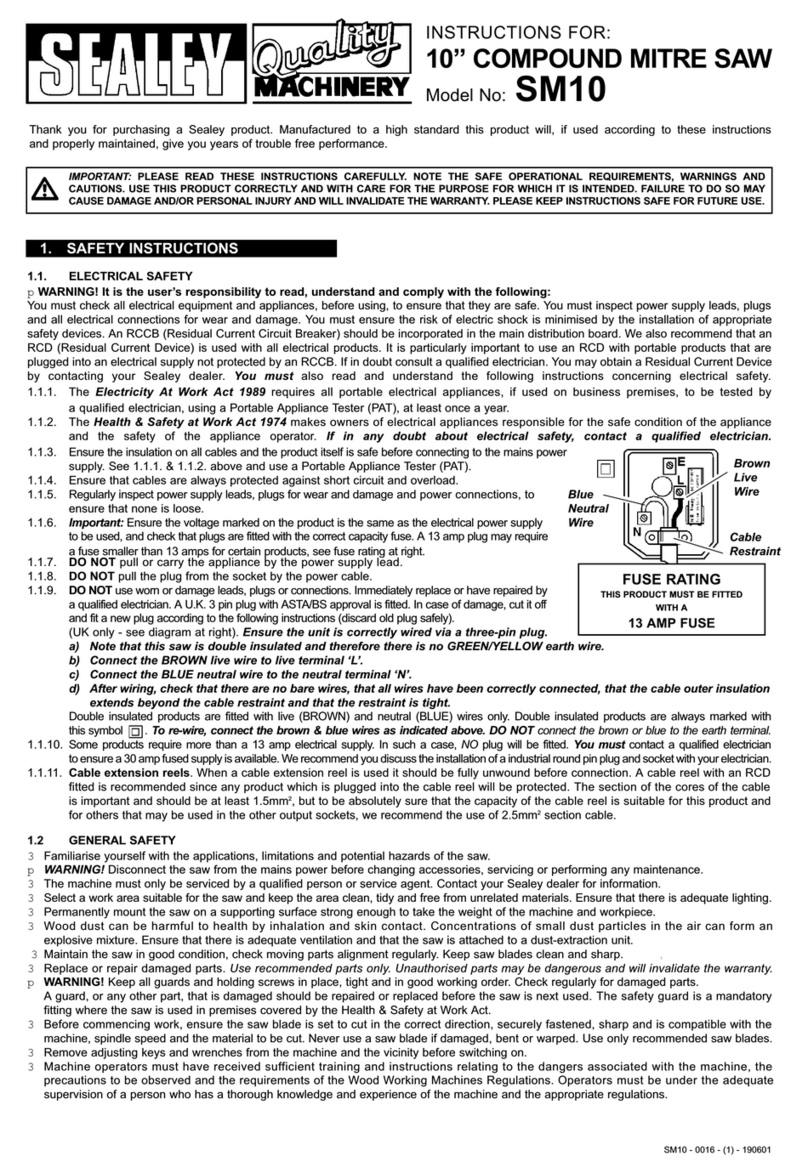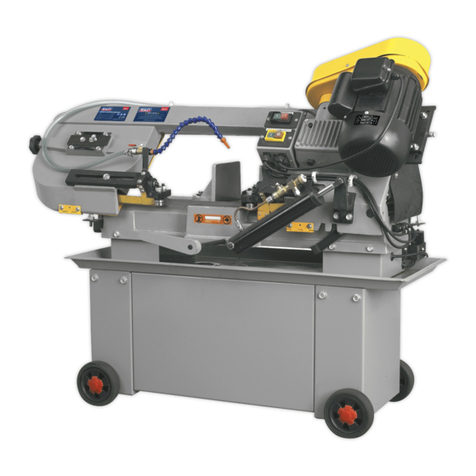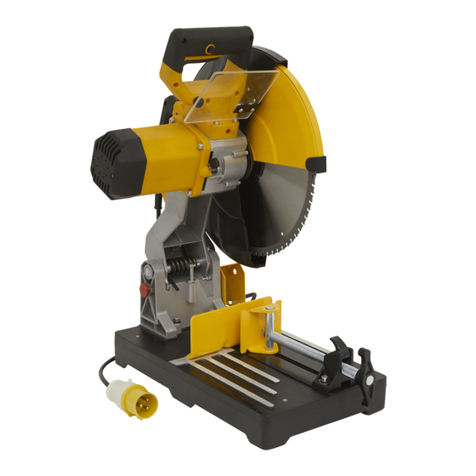
WARNING! The SM65.V2 bandsaw MUST NOT be used to cut non-metallic materials (including wood) as to do so will invalidate your
insurance cover and your warranty and may cause damage and/or personal injury.
8DO NOT wear loose or ill-fitting clothing. Remove ties, watches, rings and other jewellery. Tie up, or adequately cover, long hair.
8DO NOT start the machine until the workpiece is secure and the blade has been lowered to just above the workpiece.
8DO NOT use the bandsaw with the blade guard or pulley cover removed.
8DO NOT use damaged or deformed blades.
9Turn the saw off before raising the blade.
8DO NOT run the saw with the blade in the raised position.
8DO NOT use the machine in wet or damp locations.
8DO NOT use the machine in areas where fumes from paint, solvents, or flammable liquids pose a potential hazard. Keep all flammable
materials (including wipers or cleaning rags) away from the saw, and dispose of according to local regulations.
8DO NOT stand on the machine.
8DO NOT leave machine running unattended. Turn power switch ‘Off’ and DO NOT leave area until machine has come to a complete stop.
8DO NOT use whilst under the influence of drugs, alcohol or other intoxicating medication. DO NOT use the tool if you are tired.
2. iiiINTRODUCTION
Fully guarded blade with magnetic no-load voltage switch to prevent motor re-start in the event of power failure or blade jam. Fitted
with oil-bath gearbox and life lubricated drive bearings for quiet, smooth operation. Features swivel arm facility to aid angle cutting of
long pieces of stock in confined workshop. Supplied with quick action vice - push the jaw up to the workpiece and then pull the cam
action lever to lock. Fully adjustable precision blade guides for accurate cutting and longer blade life. Supplied with anti-vibration feet and
workshop stand.
3. i SPECIFICATION
Model no:.: ....................................................................SM65
Capacity 90o - Round:..........................................Dia. 105mm
Capacity 90o - Square / Rectangular (H x W): ...105 x 150mm
Capacity 45o - Round:..........................................Dia. 100mm
Capacity 45o - Square / Rectangular (H x W): ...... 85 x 65mm
Blade Size: ............................................1638 x 13 x 0.63mm
Blade Speeds:............................................ 18, 30, 48mtr/min
Motor Power:.................................................................375W
Supply:...........................................................................230V
Weight:........................................................................... 75kg
4. ASSEMBLY
4.1. ASSEMBLY
NOTE: Numbered brackets refer to Fig 1 and Parts diagram.
4.1.1. Assemble the floor stand as described below using the nuts
and bolts provided (refer to Fig 1).
4.1.2. Make one end frame by assembling two legs (1) to short
upper cross member (4) using four bolts (8), four washers (7),
four split washers (6) and four nuts (5). Attach lower short
cross member (3) to the inside of the legs using two bolts (8).
4.1.3. Create a second end frame using the same set of components.
Join the two end frames together using two long upper cross
members (9) using two bolts (8) at each end of each cross
member. The ends of the long cross members should pass under
the ends of the short cross members (4).
4.1.4. Attach the two lower long cross members (2) to the inside of
the frame using one bolt at the end of each.
4.1.5. The anti-vibration mountings (14) can either be fitted to the base
of the saw or to the stand. For bench mounting and when the
stand is to be secured to the floor, fit the mountings to the saw
base. Where the stand is to be portable, fit the mountings to
the bottom of the legs.
4.1.6. Place the saw onto the stand and retain it at either end with
bolt (10), washer (11) and nut (12).
4.1.7. Remove transit chain (15), retain for future use.
4.1.8. Slide fence (104) into vice base (103) and tighten set screw in front face of vice to retain.
4.1.9. When the saw arm is in the down position the cutting edge of the blade should be just below the main surface of the vice in order for
the blade to cut all the way through the workpiece. If this is not the case, loosen the lock nut (37) and adjust the stop bolt (38) so that
the cutting edge of the blade is 2 to 3mm below the vice surface. Re-tighten locknut (37).
4.1.10. Adjust switch cut-off screw (17) to ensure that ‘Off’ switch is actuated when, or just before, the body frame contacts the abutment
screw (38). Tighten nut (5).
4.2. BLADE SELECTION
The chart at the right show the recommended setup for various
metals and cut lengths. Blades are available from your Sealey
stockist in four tooth pitches: 6, 10, 14 and 24 tpi (see parts list).
fig.1
Blade Chart for Flat and Round Bar
Recommended blade teeth per inch (tpi) for nominal cut length.
Cut Length Under 8mm 4-13mm 6-16mm 8-22mm
Tpi 32 24 18 14
Cut Length 10-35mm 17-40mm 25-50mm 38-75mm
Tpi 10 8 6 4
Cut Length 50-100mm 75-150mm 114-225mm >200mm
Tpi 3 2 1.25 0.75
SM65.V2 Issue 4 (H, F) 06/02/18
Original Language Version
© Jack Sealey Limited
